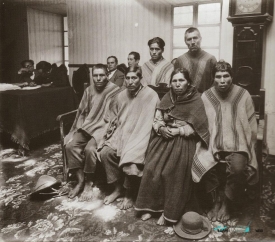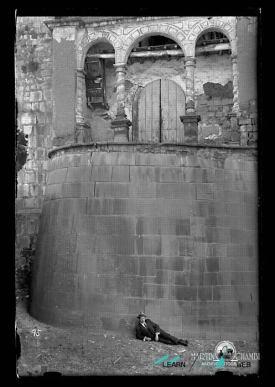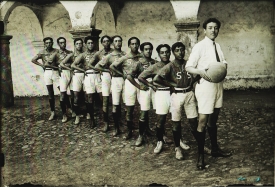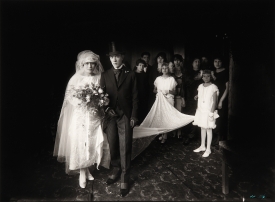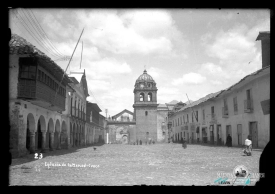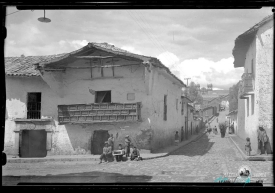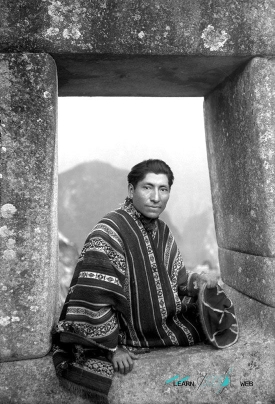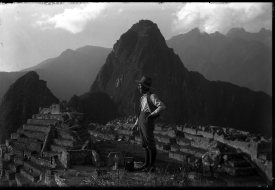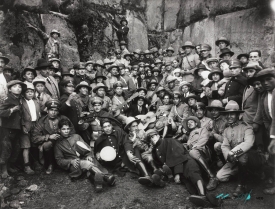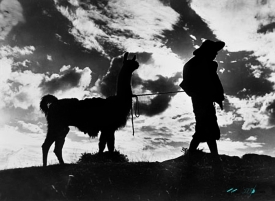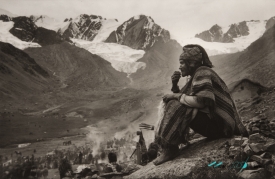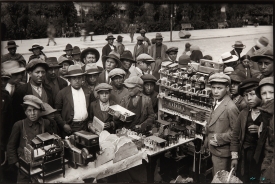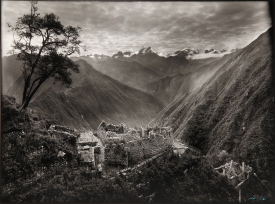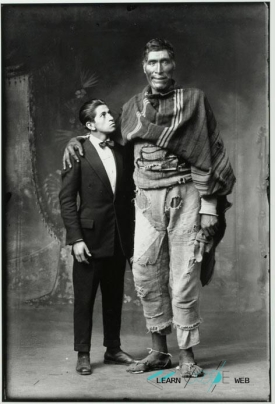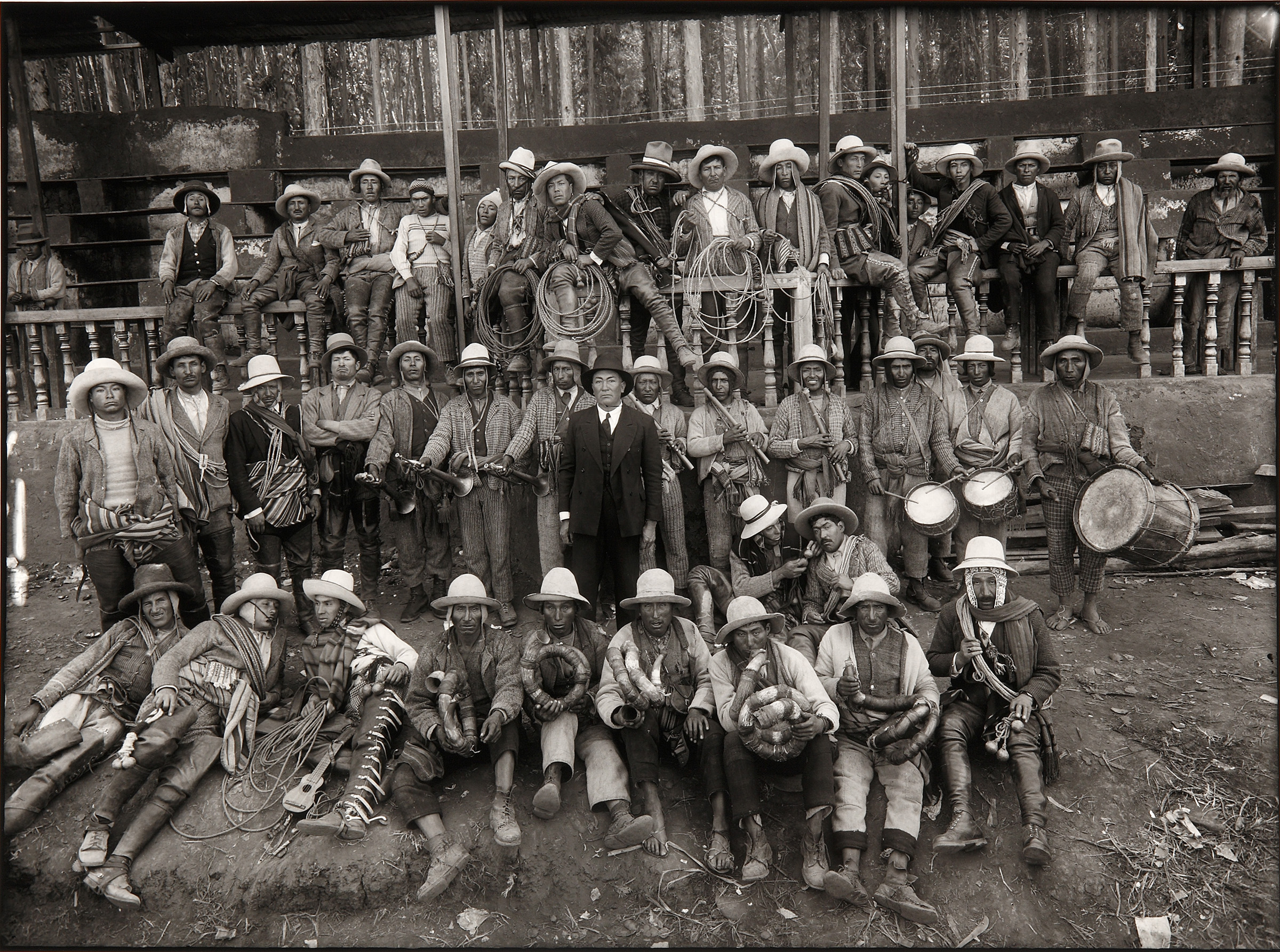
MartûÙn Chambi Jimûˋnez (1891-1973) is widely recognized as one of the most important photographers in Latin America. His ability to capture the essence of Andean communities, combined with his mastery of light and composition, made him a key figure in the history of photography. Chambi not only documented the daily lives of Peruvian indigenous people but also celebrated their culture, elevating the dignity and beauty of the "copper-colored race" to which he belonged. This article explores his life, work, and lasting legacy.
Born in 1891 in the Quechua community of Coasa in the Puno department, Chambi had his first encounter with photography at the age of 14. He met some Englishmen working with cameras and developing processes at the Santo Domingo mining company near the Inambari River in the Amazonian part of Puno. This encounter marked the beginning of his fascination with photography.
At the age of 17, Chambi decided to migrate to the city of Arequipa, a vibrant cultural center where photography was more developed. According to art critic Jorge Villacorta, Chambi moved to the 'White City' because it was considered the photography capital of the southern region of Peru. There, he worked in the studio of photographer Max T. Vargas, an influential mentor who played a crucial role in his technical and artistic development. Vargas taught Chambi the intricacies of the trade, and the young photographer began to stand out in photography contests.
Chambi quickly gained recognition as a photographer, and his fame grew through word of mouth. His exceptional use of light and composition earned him widespread acclaim, and he soon balanced his studio work with his role as a photojournalist for Peruvian newspapers and magazines. Between 1918 and 1930, he worked for the Buenos Aires newspaper La Naciû°n, and in February 1938, his work was published in the American magazine National Geographic, further consolidating his international prestige.
Among his most iconic works is ãThe Giant of Chumbivilcas,ã also known as ãThe Giant of Paruro.ã This photograph, published in the newspaper La Crû°nica, tells the story of Juan de La Cruz Sihuana, a man over 50 years old who measured 2 meters tall. Sihuana's image is striking not only for its physical contrast with a shorter man but also for the dignity and humanity with which Chambi captured him.
"The Family in the Cemetery" (1928): A poignant image capturing the solemnity and emotion of a family in mourning.
"At the La Angostura Hacienda" (1931): A portrait showcasing life and work on an Andean hacienda.
"The Cusco to Santa Ana Railway Line" (1930): Documenting the connection and development in the Andean region.
"The Indian Woman with the Child" (1934): An image highlighting the intimate relationship and strength of indigenous women.
Between 1943 and 1950, Chambi's studio in Cusco became a mandatory meeting point for artists, intellectuals, and travelers, known as ãThe Embassy of Bohemia.ã During this period, Chambi was recognized as the best Andean photographer, and his fame crossed borders. The Museum of Modern Art in New York described his photograph "The Wedding of Don Julio Gadea, Prefect of Cusco" (1930) as "one of the greatest of the 20th century."
Chambi's works have been exhibited in numerous prestigious museums and galleries worldwide, including the Museum of Modern Art in New York (MoMA), the National Museum of Fine Arts in Buenos Aires, the Quai Branly Museum in Paris, the House of the Americas in Havana, and the Museum of Art of Lima (MALI), among others.
MartûÙn Chambi was a master in the art of photography, capable of capturing the light and Andean reality with unique sensitivity. His work not only documents the life and culture of indigenous communities but also celebrates them, granting them the dignity and recognition they deserve. Chambi continues to inspire photographers and artists worldwide, and his legacy endures in each of his images.
Born in 1891 in the Quechua community of Coasa in the Puno department, Chambi had his first encounter with photography at the age of 14. He met some Englishmen working with cameras and developing processes at the Santo Domingo mining company near the Inambari River in the Amazonian part of Puno. This encounter marked the beginning of his fascination with photography.
At the age of 17, Chambi decided to migrate to the city of Arequipa, a vibrant cultural center where photography was more developed. According to art critic Jorge Villacorta, Chambi moved to the 'White City' because it was considered the photography capital of the southern region of Peru. There, he worked in the studio of photographer Max T. Vargas, an influential mentor who played a crucial role in his technical and artistic development. Vargas taught Chambi the intricacies of the trade, and the young photographer began to stand out in photography contests.
Career in Cusco
In 1920, Chambi moved with his family to Cusco and opened his own photographic studio. This marked the beginning of the most significant part of his career, which lasted until around 1950. During this period, Chambi conducted extensive visual documentation, capturing portraits, customs, archaeological and architectural monuments, as well as landscapes of the Andean region.Chambi quickly gained recognition as a photographer, and his fame grew through word of mouth. His exceptional use of light and composition earned him widespread acclaim, and he soon balanced his studio work with his role as a photojournalist for Peruvian newspapers and magazines. Between 1918 and 1930, he worked for the Buenos Aires newspaper La Naciû°n, and in February 1938, his work was published in the American magazine National Geographic, further consolidating his international prestige.
Revaluation of the Copper-Colored Race
One of the most notable aspects of Chambi's work is his identification with the indigenist movement. Through his photographs, he revalued the "copper-colored race"ãhis own race. Andean peasants were protagonists in his images, and Chambi portrayed them with a dignity and humanity that challenged the stereotypical representations of the time. His photographs not only documented the lives of indigenous communities but also celebrated them, highlighting their strength, beauty, and connection to their environment.Among his most iconic works is ãThe Giant of Chumbivilcas,ã also known as ãThe Giant of Paruro.ã This photograph, published in the newspaper La Crû°nica, tells the story of Juan de La Cruz Sihuana, a man over 50 years old who measured 2 meters tall. Sihuana's image is striking not only for its physical contrast with a shorter man but also for the dignity and humanity with which Chambi captured him.
Other notable works from this period include:
"The Family in the Cemetery" (1928): A poignant image capturing the solemnity and emotion of a family in mourning.
"At the La Angostura Hacienda" (1931): A portrait showcasing life and work on an Andean hacienda.
"The Cusco to Santa Ana Railway Line" (1930): Documenting the connection and development in the Andean region.
"The Indian Woman with the Child" (1934): An image highlighting the intimate relationship and strength of indigenous women.
Between 1943 and 1950, Chambi's studio in Cusco became a mandatory meeting point for artists, intellectuals, and travelers, known as ãThe Embassy of Bohemia.ã During this period, Chambi was recognized as the best Andean photographer, and his fame crossed borders. The Museum of Modern Art in New York described his photograph "The Wedding of Don Julio Gadea, Prefect of Cusco" (1930) as "one of the greatest of the 20th century."
Legacy and Recognition
MartûÙn Chambi died in 1973 in Cusco. His legacy has been preserved by his descendants, who created the MartûÙn Chambi Association to safeguard, catalog, and disseminate nearly 40,000 negatives of his work. In 2019, his work was declared Cultural Heritage of the Nation by the Ministry of Culture of Peru, recognizing his invaluable contribution to the country's cultural heritage.Chambi's works have been exhibited in numerous prestigious museums and galleries worldwide, including the Museum of Modern Art in New York (MoMA), the National Museum of Fine Arts in Buenos Aires, the Quai Branly Museum in Paris, the House of the Americas in Havana, and the Museum of Art of Lima (MALI), among others.
MartûÙn Chambi was a master in the art of photography, capable of capturing the light and Andean reality with unique sensitivity. His work not only documents the life and culture of indigenous communities but also celebrates them, granting them the dignity and recognition they deserve. Chambi continues to inspire photographers and artists worldwide, and his legacy endures in each of his images.



